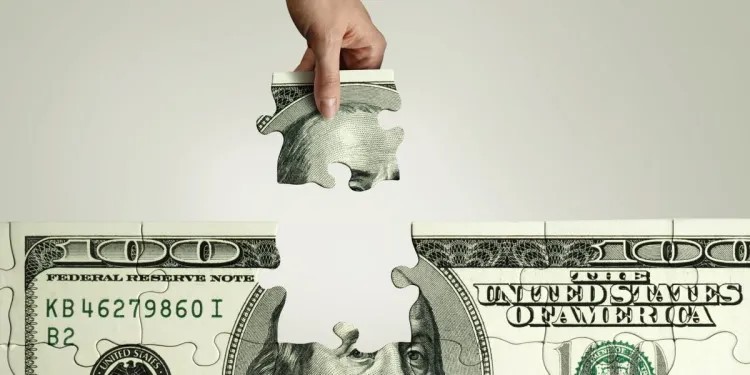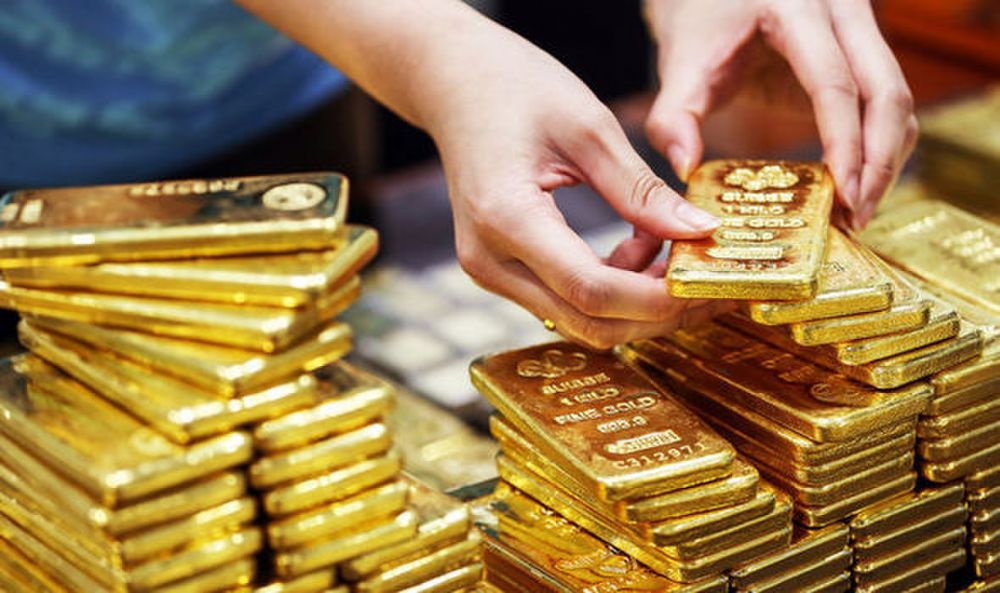 |
| Many countries are trying to move away from the USD due to concerns about soaring debt and the impact of unilateral sanctions from the US. (Source: biz.crast.net) |
The US dollar has held a preeminent position in the world economy since the end of World War II. Its widespread acceptance means it accounts for the majority of global reserves and trade payments.
According to the Bank for International Settlements, the USD remains the most traded single currency in the foreign exchange market, with nearly 90% of transactions involving the greenback.
But there have always been questions about how long the U.S. currency can maintain this special status. There have been many attempts to find a replacement over the past 75 years, especially as the share of non-U.S. countries in the world economy has increased.
Major reserve currency
The greenback is said to play two important roles in the global financial system. The first is its role as a reserve currency for global central banks. The second is its role in settling global trade flows.
Over the past decades, the USD has remained the world's largest reserve currency.
According to the International Monetary Fund (IMF) , the proportion of USD held by central banks around the world has decreased by more than 70% compared to 1999.
However, the fund believes that the USD will still hold the number one position. This currency accounts for about 58.36% of the national reserve funds globally in the fourth quarter of 2022. For comparison, the Euro is in second place but its proportion is much lower, accounting for only about 20.5%, while the Yuan accounts for only 2.7%.
The IMF also informed that in the context of the unstable world economy, countries have begun to gradually reduce their dependence on the US dollar in cross-border transactions. Concerned about soaring debt and the impact of unilateral sanctions from the US, many countries have cherished the idea of moving away from the greenback.
Russia, for example, which faced an unprecedented series of sanctions from the US last year, has shifted almost all of its energy transactions into other currencies, especially the ruble and yuan.
Besides, China is also one of the most active countries in promoting the process of reducing dependence on the USD, with the aim of weakening the greenback's dominant position in global trade.
During his visit to Beijing in April 2023, Brazilian President Lula expressed the need to reduce dependence on the USD in international trade transactions. Malaysian Prime Minister Anwar Ibrahim also proposed establishing an Asian Monetary Fund to reduce dependence on the USD.
Additionally, in early April this year, Indian media widely reported that India and Malaysia could trade in Rupees.
Despite the above efforts, the IMF asserted that, although the share of global foreign exchange reserves of the US dollar continues to decline, it is still the currency used more than all other currencies combined.
Investors also said that countries outside the US have made greater efforts to develop mechanisms for bilateral trade settlement in local currencies. However, any such change is unlikely to happen "overnight".
Experts say the process of replacing a global reserve currency could take decades.
About 80 years ago, the British Pound was the world currency. This title was held by the pound for decades. It was not until the Bretton Woods Conference in 1944 that the US dollar took the lead. This fact proves that we should not expect the greenback to be "defeated" by any of the contenders in the near future.
 |
| Increasingly pessimistic about the USD, 25% of global central banks plan to increase gold reserves. (Source: Getty Images) |
Will Gold Make a Surprise Win?
In this context, gold is expected by many to become an important rival to the USD due to its high liquidity and long history. Central banks around the world still hold gold as an alternative asset to fiat currencies.
Precious metals are a hot asset for central banks in 2022. According to the World Gold Council (WGC), 2022 marks the 13th consecutive year that central banks have bought gold for their reserves, with total purchases increasing by 152% compared to 2021, reaching 1,136 tonnes - the highest level since 1950.
Not only that, central banks' demand for gold reserves in 2022 accounts for 23% of total market demand, a sharp increase compared to the 8-14% level in the 2011-2019 period.
A survey by UBS (Switzerland) with 83 central banks around the world also showed that two-thirds of banks will continue to buy gold reserves this year. Most leaders and managers of central banks participating in the survey said that the stability of gold will help countries defend themselves in the context of increasing geopolitical risks and high inflation.
The WGC survey also reported that nearly 25% of global central banks surveyed said they were looking to increase their gold reserves instead of the US dollar. According to the survey, central banks around the world are more pessimistic about the US dollar than before and therefore plan to increase their purchases of the precious metal.
However, it cannot be denied that precious metals still have certain limitations, that is, supply cannot keep up with demand. Each year, the world only has the capacity to mine a fixed amount of gold, at the same time, the total gold reserves in the world are finite.
According to WGC estimates, to date, more than 200,000 tons of gold have been mined and only more than 50,000 tons remain underground.
Meanwhile, there is no limit to the size or speed of an economy. Therefore, if gold is used in international transactions, it is likely that the supply will be tightened and the growth of the economy will be hindered.
Source


































































































Comment (0)